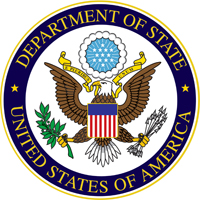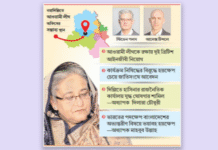Surging ahead, then falling behind Pakistan

When Bangladesh won independence through sacrifice and bloodshed of the 1971 liberation war, many international analysts expressed apprehension about its future. They felt this most densely populated country of the world would not be able to stand on its own feet, economically. Former US secretary of state Henry Kissinger saw it as a basket case, perhaps leading to US’s reluctance to assist Bangladesh in its post-independence times of need. Nixon and Kissinger saw the emergence of Bangladesh as their defeat in the Cold War at the time.
Bangladesh was behind Pakistan in every economic indicator in 1972, and now, 48 years later, the picture is quite the opposite. This more than justifies our independence. Human resources are an important factor for any country’s independence and we are not only ahead of Pakistan in this respect, but also ahead of India, in many instances. Nobel laureate Amartya Sen has praised Bangladesh’s progress in women’s education, healthcare, women’s empowerment and decrease in maternal and infant mortality. The Economist Intelligence Unit and other international agencies see Bangladesh’s economic development as a miracle.
Comparative statistics make things clear. In 1971 Bangladesh’s per capita income was $120 while that of Pakistan was $180. Presently Bangladesh’s per capita income is $1827, way more than Pakistan’s $1641. In 2018-19 FY, Bangladesh exported goods worth $36.60 billion, for Pakistan it was $23 billion. Yet in 1972-73 FY, Bangladesh exports amounted to only $377 million, where Pakistan’s were $760 million. That means, 48 years ago, our exports were less than half of that of Pakistan. Now ours are double. Globally, Bangladesh stands second in readymade garment exports, only behind China.
Bangladesh’s currency is also much stronger than that of Pakistan, while it was weaker in 1972. Presently the taka exchange rate is 84 taka per dollar and in Pakistan it is 124 rupees. According to the 20 March 2019 update, Bangladesh’s foreign exchange reserves stood at $31.698 billion, more than double of Pakistan’s $14.88 billion.
In 1972-73, the average life expectancy in Bangladesh was 47 years, in Pakistan 54. In 2018-19 Bangladesh’s average life expectancy was recorded at 73 years while Pakistan’s was 66. Our average life expectancy is even higher than that of India. The World Bank’s human resource index 2018 ranked Bangladesh at 106 among 157 countries. Pakistan ranked 134 and India 115.
According to the HSBC report, Bangladesh is on the way to becoming the world’s 26th biggest economy. Presently it stands at 42nd. Bangladesh is ahead in population control, too. In 1971 the population was 75 million while Pakistan’s was 65 million. Now Bangladesh’s population stands at 170 million and Pakistan’s at 207 million. The Bangladeshi policymakers, who consider the large population to be a resource, should visit Pakistan.
According to the World Bank’s latest update, Bangladesh will rank among the world’s top five in economic growth this year. Bangladesh is doing well in human resource development.
The World Economic Forum’s annual report states Bangladesh is way ahead of India and Pakistan in the inclusive development index. Among the other South Asian countries, only Nepal is ahead of Bangladesh. Bangladesh ranks 34th as an emerging economy, with India at 62, Pakistan at 52 and Sri Lanka at 40.
Bangladesh is also doing better than Pakistan in countering militancy and terrorism. Bangladesh has brought the militancy problem almost completely under control while Pakistan is known as a safe haven for militants and terrorists.
However, Bangladesh falls behind Pakistan in two areas. These are quality of higher education and press freedom. At least five universities of Pakistan rank among the global 1600. Bangladesh trails far behind, with Independent University only at 3013 and others far down the list.
When it comes to press freedom, Reporters Without Borders (RSF) ranks Pakistan at 139 among 180 countries and India at 138. Bangladesh falls much lower, at 146.
Despite all risks and dangers, Pakistan’s media is able to strongly criticise the establishment. Najam Sethi on 5 April wrote in the Friday Times that the PTI government was growing more and more authoritarian in order to suppress differing views. He said they had adopted this strategy to resist the unrest growing over the last eight months among the people over the disappointing performance of the government. He said it was unfortunate that the media and pillars of the state and society had created such an image of Imran Khan that they were not being able to criticize his unacceptable behaviour. He wrote that there must be certain vested interests behind this.
On the same day in The Nation, Malik Muhammad Ashraf wrote that Pakistan was among those unfortunate countries where the military and civil autocrats had been making fools of the people for over 70 years, with impunity for themselves. He wrote that their objective was to grab power and create their own fortune. He said they adopted an anti-people mode in terms of governance to protect their own interests.
We cannot speak out so courageously as the Pakistani media. That is why we fall nine places behind Pakistan when it comes to ranking press freedom. Having struggled so hard for democracy, this certainly is not a matter of pride for Bangladesh.
* Sohrab Hassan is joint editor of Prothom Alo. This piece was published in the print edition of Prothom Alo and has been rewritten here in English by Ayesha Kabir









